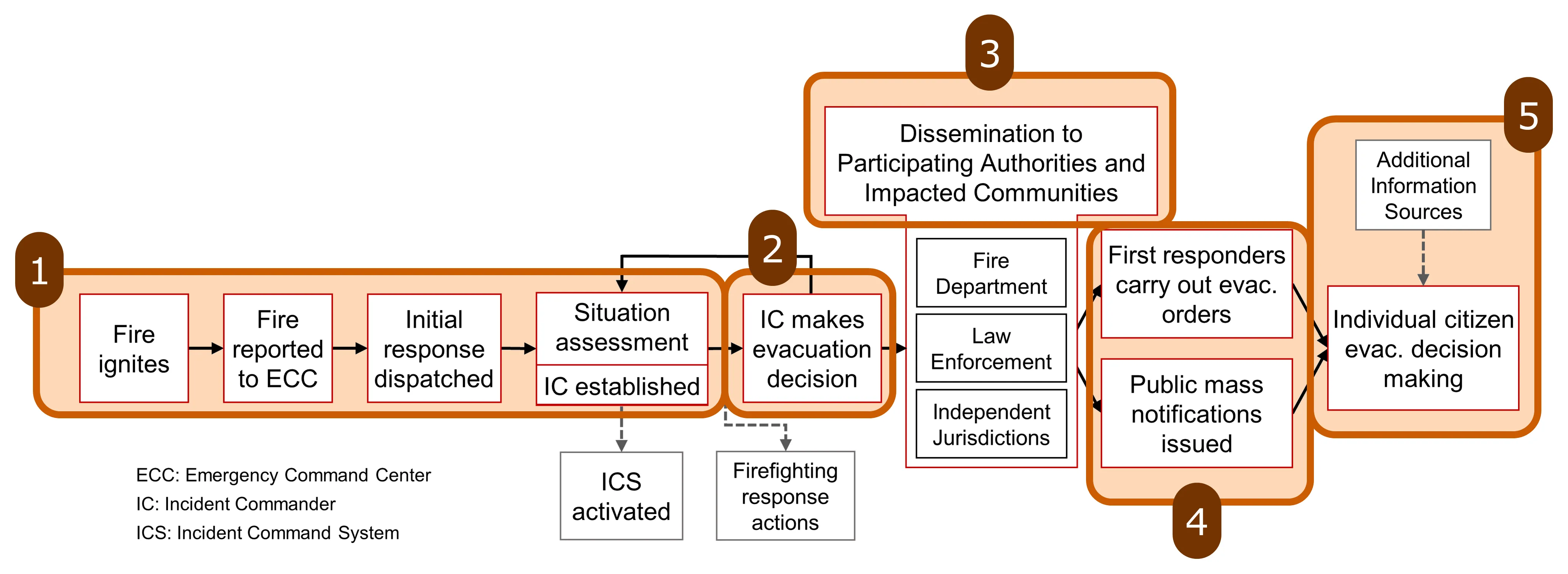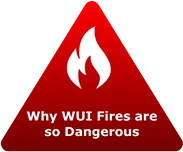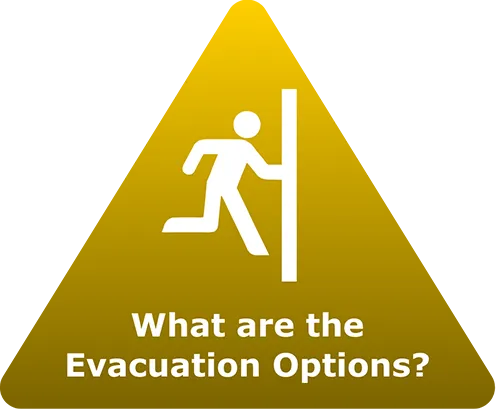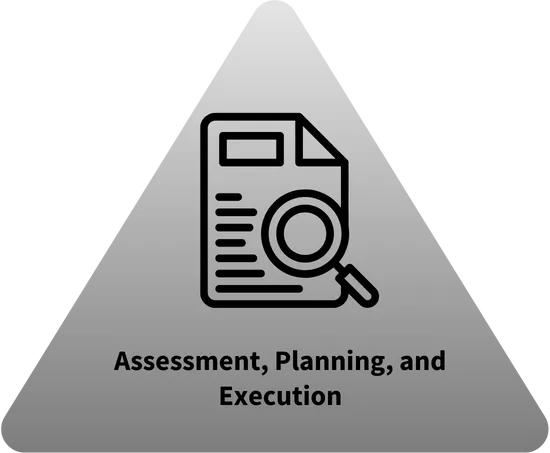
WUI Fire Evacuation and Sheltering Considerations — Assessment Planning and Execution

UNDERSTANDING THE EVACUATION TIMELINE
There is a minimum amount of time required to carry out an evacuation. In fire protection engineering, this is often referred to as the required safe egress time (RSET). Traditional RSET includes the time for detection, alarm, pre-movement, and evacuation. In the WUI, the WUI RSET (WRSET) involves additional steps not usually encountered (or that are typically much shorter) in building evacuation timelines.
In its most basic form, the time required for evacuation (measured from ignition to safety) can be represented in two phases: the time from ignition to the activation of the emergency notification and evacuation order message process, and the physical response and movement time. Conceptually, these phases are sequential and the times can be added together. Each phase consists of many contributing steps. Separating the process into these two phases allows emergency managers to identify areas of success and improvement in the notification process and the evacuation process.


The time from ignition to activation of the notification system consists of several steps including the time for:
tevac. order, is the time it takes the incident commander to request an evacuation order, including the time from ignition to detection plus the time for situational assessment and decision-making.
tinfo transfer and tdissemination represent time for information transfer and dissemination. This includes how long it takes to communicate an evacuation request from the incident commander to the agency responsible for the evacuation and how long it takes for that agency to implement the orders and disseminate the information to the public. Note that tdissemination represents the time to the start of the dissemination (e.g., the first notification or reverse-911 call), not the time elapsed for a complete notification. This provides an absolute minimum total time for evacuation for planning purposes. This information by itself does not provide an estimate for the time needed to inform the majority of a certain population.
After a fire is reported, ITA depends solely on the processes and actions taken by first responders and emergency managers to decide on intended evacuation actions and to issue the appropriate notifications. Streamlining these processes can save critical time that can be used for the evacuation process.
The evacuation time includes all actions of evacuees after a notification is issued. tpreparation and ttransportation represent the minimum time for civilians to get out of the fire, including preparation and transport. Preparation may include receiving and interpreting the evacuation message, grabbing their go bag, and beginning to move. Transport includes the travel time it takes to leave the fire area.
Conceptually, each evacuation event follows a sequence of steps that initiate the actual movement of people. The time duration of each step depends on the specific scenario, and certain components may occur out of the order depicted.




